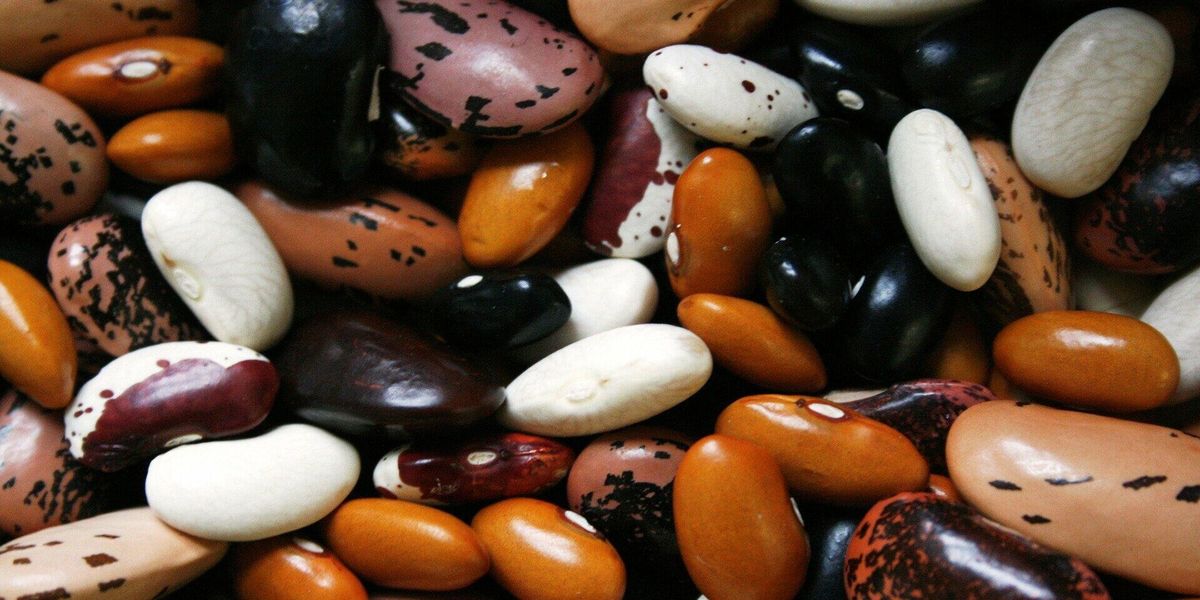Beans are a plant of the legume family (Fabaceae), which produces fruits in the form of pods with beans. Beans can be curly, and can grow in the form of a shrub. The color, size and shape of the seeds depend on the particular variety.
Beans are in the TOP 10 most useful foods! So be sure to include it in your diet. What is its use? Beans contain about 20% protein, which is equivalent to meat in terms of energy value. In general, the composition of this product is so balanced that almost all body systems receive useful substances.

Sowing beans
The first thing to think about is where to land. Beans do not like clay soils where water does not seep well. Too much moisture is bad for her. The plant loves fertile and light soils. In addition, think in advance which area you have not fertilized for a long time, because beans are green manure, that is, they saturate the soil with nitrogen. Everything grows well after that.
The second step is seed preparation. It is necessary to weed out spoiled beans, for example, those with a wormhole. You can then soak the beans overnight so that they germinate faster when they get into the soil. It is also recommended to dip them in a solution of boric acid about 5 minutes before planting - this will protect the seedlings from insect pests.

When the seeds are prepared and the place is chosen, we prepare the bed. Curly beans can simply be planted, for example, along the fence. We water the soil from a watering can and stick the beans in rows to a depth of 5 cm. In this case, the distance between plants should be at least 15 cm.
If the temperature has not yet settled, cover the bed at night to protect from frost. It is not recommended to plant beans at temperatures below +10...+15°C.
Bean care
In order for the bean to be born, it is necessary to properly care for it. Care also consists in loosening the soil, weeding, top dressing, watering, pest control.
Soil loosening
The soil must be loosened from the very emergence of shoots. We do this carefully so as not to damage the root system and not accidentally pull out the beans themselves. In the future, loosening between rows can be combined with weeding.

Loosening the soil is especially important if it tends to shrink and poorly pass water. Recall that beans do not like waterlogging. If the water does not seep through, the crop will not be the best.
Top dressing
3-4 weeks after germination, the first feeding is carried out. Usually a full range of fertilizers is used, but most of all at this stage the plant needs nitrogen. Ideally, it should receive atmospheric nitrogen, but in dry weather, the plant can acutely feel its shortage. For example, some people use fermented bird droppings to fertilize beans.

After about 3 weeks, you can carry out a second top dressing - already for the formation of fruits. This time, phosphorus, magnesium and potassium are the most important for the plant (all this is contained in ordinary ash).
Watering
Beans require a lot of water, especially during the pod formation stage. Therefore, you need to ensure that the soil is moderately moist. It is difficult to specify the exact rate of watering - it directly depends on the weather and soil. The best water for irrigation is rainwater. And it’s hard to overestimate the benefits of thunderstorms. The plant grows very strongly after a thunderstorm.
Pest control

Most often, beans are affected by slugs. As measures to prevent this scourge, it is necessary to remove weeds in a timely manner, to monitor moderate soil moisture. If the slugs are already wound up, a fairly effective measure is to remove them. They like to gather on pebbles and other objects.
Copper-containing preparations help well against fungal diseases and viruses.
Harvesting

It all depends on the variety of beans and the needs for which you want to direct it. Asparagus beans should not be kept until dry, otherwise its value will be lost.
For preservation, beans need to be harvested earlier than usual. If you want to stock up on beans for the winter, wait until the pods turn yellow and begin to open. The main thing is not to miss this moment, otherwise you will have to collect beans from the ground. But it is best to harvest the bean pods when they are ripe, but still slightly green (not completely dry, plump). To determine maturity, you need to break the pod in half. There should be no fibers along the edges, the fracture should be even.
Many people harvest the beans all at once - this is wrong: the pods can ripen as the plant grows. Therefore, we collect gradually.










